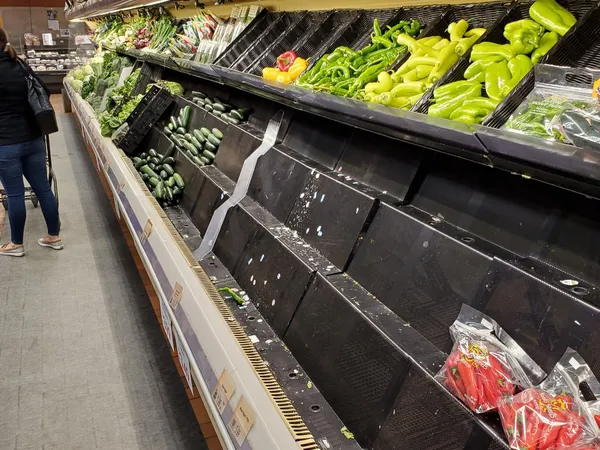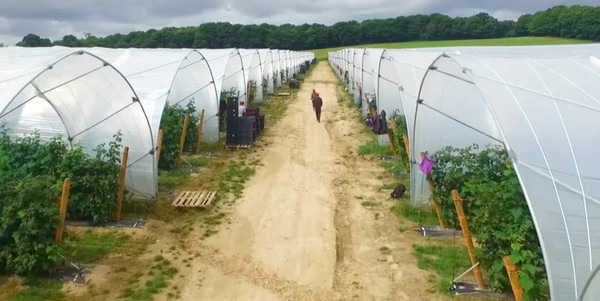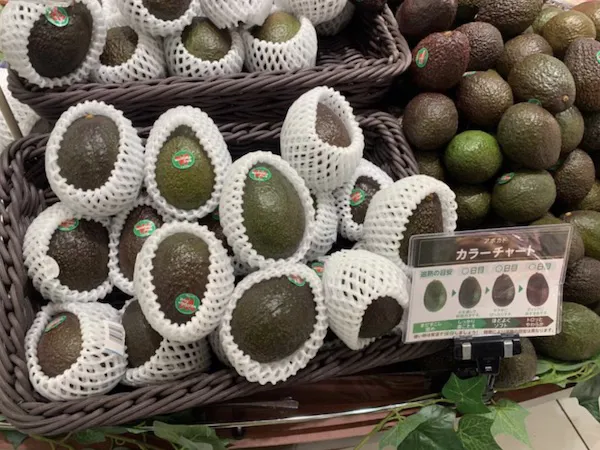The growing worry surrounding the pandemic that took place in January and February culminated in March, when the World Health Organization officially declared the outbreak to be a global pandemic. The effects on the produce industry in March were significant, as a climate of uncertainty and fear took hold of people across all industries throughout the world.
Impact on retail and foodservice
Retailers and foodservice suppliers were faced with contrasting, though both unprecedented situations, as consumers started to engage in panic-buying at grocery stores and the foodservice industry came to a halt. The supply chain saw a massive shift, which affected some items more than others, potatoes in particular. The closures of schools across the world also had a significant impact, specifically in regions where schools provide lunches for students. Consumers in the US started to shy away from produce in the initial days of March, opting for more shelf-stable canned foods instead. Soon after, however, demand for produce items such as potatoes, carrots, and onions which enjoy a longer shelf-life quickly rose, along with products such as citrus which have high vitamin C content. By the week of March 15th, produce sales were up nearly 34% compared to the same week in 2019.

Limes, which are traditionally heavy on the foodservice side of the industry, saw a unique situation in which their foodservice accounts were greatly diminished but their retail orders almost doubled in capacity. Apples, too, saw this shift and retail demand grew rapidly. The global demand for citrus saw an even bigger increase, as consumers started to flock to immune-supporting products.
Overall, March marked the start of the shift in consumer shopping behavior, which continues to this day.
Logistics and labor
Border closures and travel restrictions brought two main challenges to the industry: difficulties in transporting product and in finding labor. In New Zealand, 25% of the harvesting workforce is made up of overseas backpackers, who were now restricted from entering the country. In the UK, too, travel restrictions caused worries about lower volumes being harvested if the usual workers from Eastern Europe would not be allowed to enter the UK. The Canadian border closed on March 18th, but fortunately the government announced on March 20th that there would be exemptions to foreign nationals conducting essential travel, which would include foreign laborers.

The halting of personal travel also greatly reduced the number of passenger flights available, which led to an enormous price increase for airfreight, with some carriers in Latin America doubling their prices and giving priority to medical equipment. Some companies even considered renting air charters to be able to get their product to their destinations. Air freight shipments of pineapple and papaya from Ghana to Europe came to a complete halt. Ocean freight was impacted, too, as shipping containers were stuck in Chinese ports and the US and Europe suffered record low container availability. South Africa also faced container shortages for their citrus exports.
General effects on produce trade
Mango exports from Peru to China were paralyzed at the start of the month, while Chile sent much higher volumes of grapes to Europe than usual as the demand in their Asian markets dropped at the start of 2020. Asia received 10.5% less grapes than they did in 2019 while exports to Europe grew by 36%. Low demand from Asia also hit the asparagus market, and volumes from Mexico that were originally destined for Asia were rediverted to the US, causing an oversupply and drop in prices in the US market.

With China being under lockdown for much of the start of the year, the garlic and ginger markets saw enormous shortages and high prices. In the US, two-thirds of garlic imports come from China and in March prices were up 30% compared to the same time the year before. Ginger prices nearly doubled, too, and the shortages in the market were severe as importers started looking toward Latin American suppliers to fill the gaps.
In China, domestic production was drastically reduced due to the lockdown, and prices rose, though throughout March, both domestic production and imports gradually started to pick back up again.

Lockdowns
As the spread of the virus progressed, many countries issued lockdowns. At the end of March, India announced a 21-day lockdown, which brought on a state of paralysis for produce imports and caused challenges for exports, particularly for Chilean apples. Soon after, South Africa also announced a lockdown, though most producers were in support of the measure to help keep infection rates from rising.
Non-Covid news in March
Meanwhile, South Africa was also facing a national state of disaster due to a persistent drought which affected the important citrus-producing region of Letsitele in Limpopo. In the second week of March, the South African Rand hit a 40-year low.

Despite the havoc that the pandemic wreaked on the industry and the world, Colombia managed to send their first-ever shipment of avocados to Japan in March.
